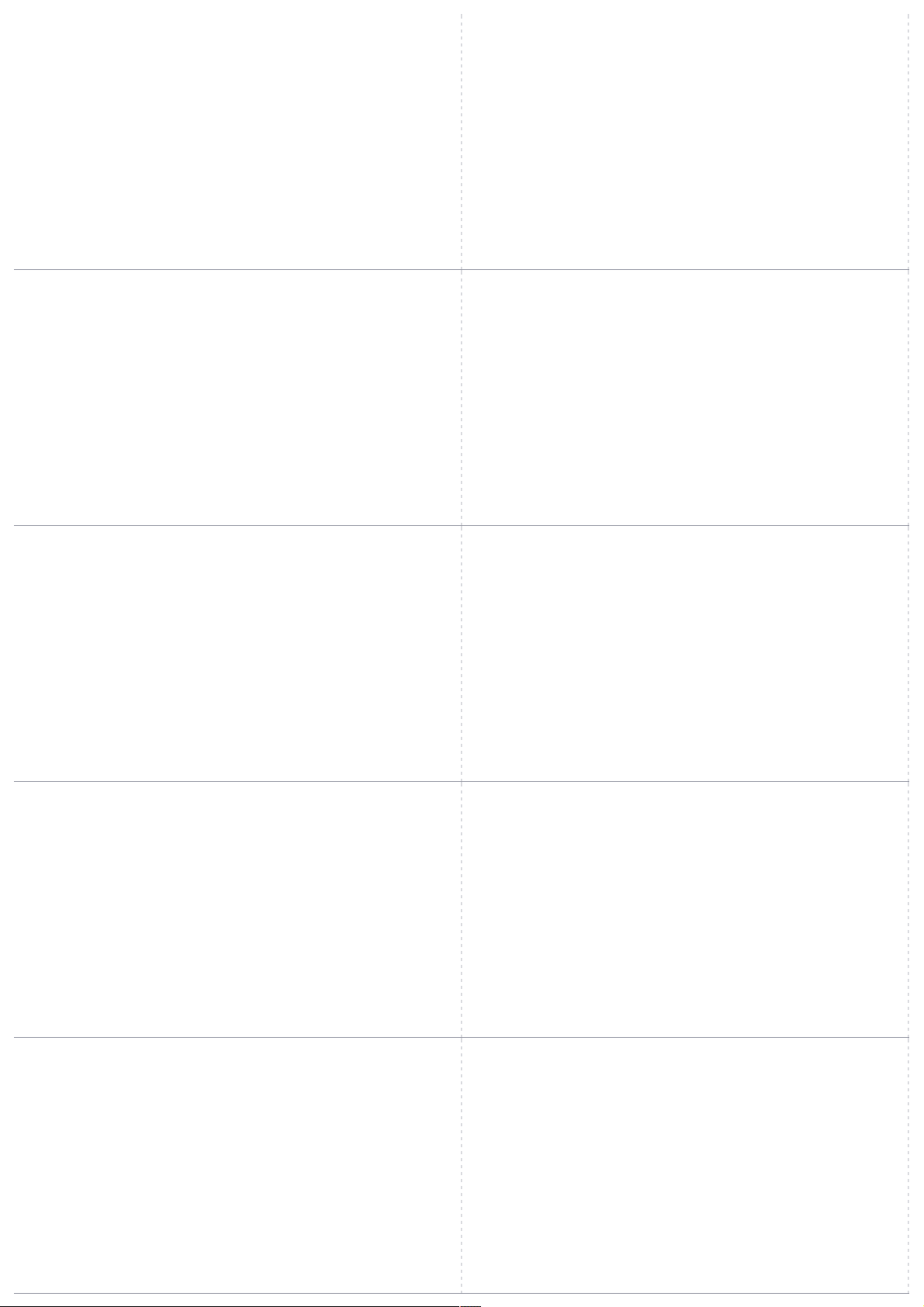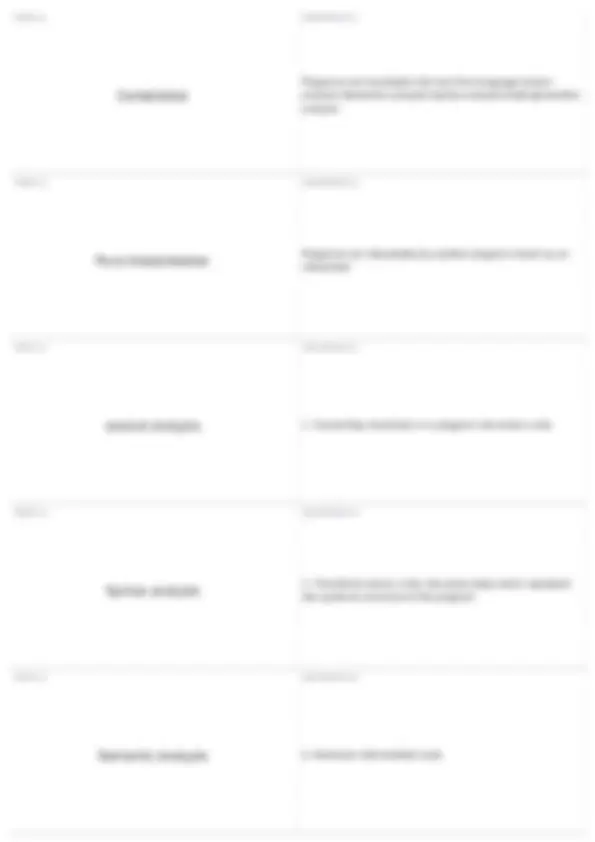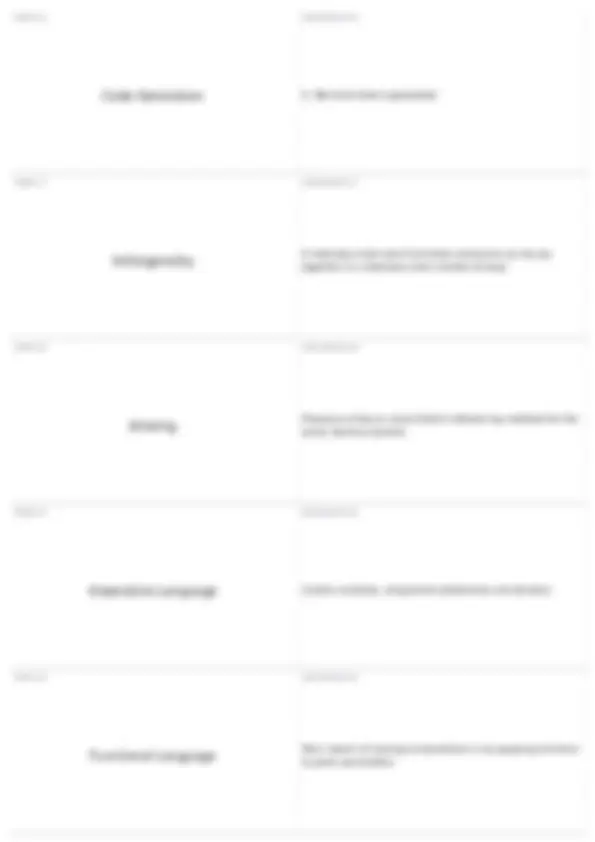





Study with the several resources on Docsity

Earn points by helping other students or get them with a premium plan


Prepare for your exams
Study with the several resources on Docsity

Earn points to download
Earn points by helping other students or get them with a premium plan
Community
Ask the community for help and clear up your study doubts
Discover the best universities in your country according to Docsity users
Free resources
Download our free guides on studying techniques, anxiety management strategies, and thesis advice from Docsity tutors
Definitions and explanations of various concepts in computer science, including programming domains (scientific, business, ai, systems programming, web software), systems software, readability, writability, reliability, cost, portability, generality, well-definedness, and language categories (imperative, logical, functional, object-oriented, markup). Additionally, it covers compilation and pure interpretation, as well as related terms such as lexical analysis, syntax analysis, semantic analysis, code generation, orthogonality, aliasing, and more.
Typology: Quizzes
1 / 6

This page cannot be seen from the preview
Don't miss anything!




There are 5 main domains:-Scientific: Large number of floating point computations-Business: Produce reports, use decimal numbers and characters-Artificial Intelligence: symbols rather than numbers manipulated-Systems Programming: need efficiency because of continuous use- Web Software: Markup, scripting, or general-purpose TERM 2
DEFINITION 2 The operating system and the programming support tools of a computer system TERM 3
DEFINITION 3 Readability is the ease in which programs can be read and understood.-Simplicity-Orthogonality-Control Statements- Data Types and Structures-Syntax Considerations TERM 4
DEFINITION 4 The ease with which a language can be used to create programs-Simplicity and orthogonality-Support for abstraction: the ability to use complex structures or operations in ways that allow details to be ignored- Expressivity: a set of relatively convenient ways of specifying operations TERM 5
DEFINITION 5 Conformance to specifications-Type checking-Exception Handling-Aliasing-Readability and writability
-Training users to use program-Writing programs-Compiling programs-Executing Programs-Reliability-Maintaining programs-Availability of free compilers TERM 7
DEFINITION 7 The ease with which programs can be moved from one implementation to another TERM 8
DEFINITION 8 The applicability to a wide range of applications TERM 9
DEFINITION 9 The completeness and precision of the languages official definition TERM 10
DEFINITION 10 -Imperative-Logical-Functional-Object-oriented-Markup
DEFINITION 17 A relatively small set of primitive constructs can be put together in a relatively small number of ways TERM 18
DEFINITION 18 Presence of two or more distinct referencing methods for the same memory location TERM 19
DEFINITION 19 Central variables, assignment statements and iteration TERM 20
DEFINITION 20 Main means of making computations is by applying functions to given parameters
Rule-based, although, rules are specifiedin no particular order TERM 22
DEFINITION 22 Data abstraction, inheritance, late binding TERM 23
DEFINITION 23 Used to specify the layout of information in web documents TERM 24
DEFINITION 24 Executable Image -- The user and system code together TERM 25
DEFINITION 25 The process of collecting system program and linking them to user program